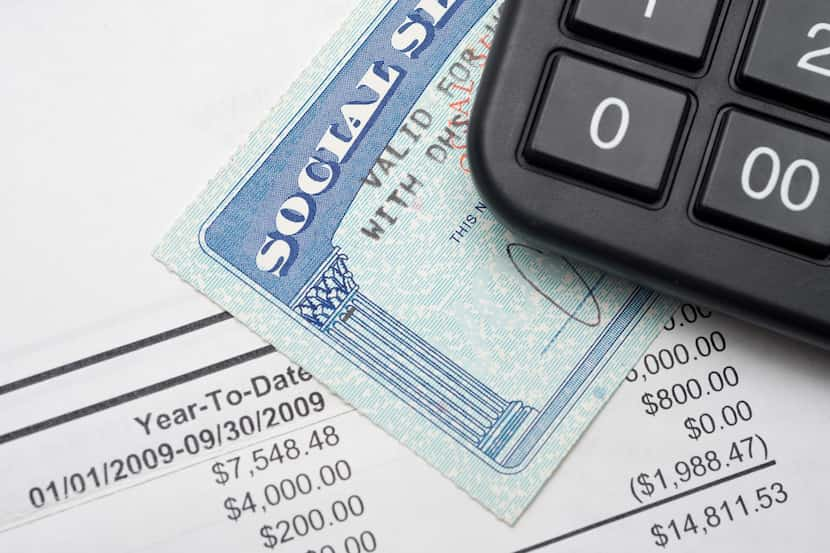Politicians are like kids learning to drive.
They want to get behind the wheel and drive, certain that they’ll do well simply because they want to drive. Once behind the wheel, they focus on the hood and what’s immediately ahead. They don’t realize that safe driving requires a longer view. They like to think what’s just ahead is most important because, well, it’s all about them right now.
It isn’t.
What’s important is what happens over a long period. In the last 60 years we’ve had almost as many years of Democratic Party presidents as years of Republican Party presidents. Over that period the growth of federal debt has been a reliable constant. The deficit projected for this year, $2.6 trillion, is greater than all federal spending in 2006. Just the interest on the federal debt, likely to run nearly $900 billion this year, will exceed total federal spending in 1985.
Today’s mess did not happen overnight.
Democrats can’t blame it all on Donald Trump’s tax cuts while he was in office. Republicans can’t blame it all on Joe Biden’s spending while in office. What neither party is willing to own up to is that they are both part of the problem. Have been for decades. Worse, they continue to refuse to be part of a solution.
People who think otherwise should do some homework, lest they be as fact-free as our elected leaders.
If you listen to fact-challenged political zealots, you will think that the federal income tax is a fast-rising monster. As you’ll soon see, it isn’t.
The real tax monster is the employment and Medicare tax. Sixty years ago, before Medicare became law, the employment tax for employees was 3.625% of covered income. If you were self-employed, it was 5.4% of covered income.
Since then, the tax rate on working has risen sharply.
Today it is 6.2% for employees and 12.4% for the self-employed. As a practical matter, while employers are the nominal payers of one-half of the employment tax, it is still a tax on labor because it ends the day employment ends. Splitting it was just a move to make the burden seem smaller.
The employment tax has increased from 3.625% to 12.4% over the last 60 years. It has more than tripled!
The facts are similar for the Medicare tax. Passed in 1966, it first claimed 0.35% of covered income. Today it is 1.45% for employees and 2.9% for the self-employed. Like the employment tax, it is split between worker and employer, but it’s really a tax on labor income. If you don’t understand this, talk to the nearest self-employed person.
Taking the long view, the Medicare tax has risen from non-existence to 2.9% over the same 60-year period.
Combine the two taxes and the tax burden on working has increased from 5.4% to 15.3% over the last 60 years. Again, the burden has tripled. It has been the fastest-rising tax for the entire period. For decades, most workers have paid more in employment taxes than they pay in federal income taxes.
The tax rate that only goes up
This table shows the total effective tax rate on income from labor for Social Security retirement and disability income. It also includes the additional tax for Medicare. It treats the employer portion of both taxes as part of the tax because it is still a tax on labor.
Total Effective Tax Rate on Labor:
| year | effective tax rate |
|---|---|
| 1963-65 | 5.4% |
| 1966 | 6.4% |
| 1971-72 | 7.5% |
| 1981 | 9.3% |
| 1990-present | 15.3% |
The history of federal receipts and spending tells a similar story. According to the historical tables in the President’s budget, total federal receipts were 17% of GDP in 1964 and 16.5% in 2023. In between, government revenue sources ran as high as 20% of GDP (2000) and as low as 14.5% (2008). But mostly they were at least 17% of GDP.
Spending is a different story.
Starting at 17.9% of GDP in 1964, it has risen steadily to reach 22.7% in 2023. Like receipts, it varies. Spending spiked to a whopping 30.8% of GDP in 2020 as COVID-19 hit. But it typically exceeded revenue by a full 3% of GDP, year after year and administration after administration.
The primary takeaway from these long-term examples is that our political leaders of both ilks are simply unwilling to take the political risk of tempering spending, though the groups they spend money for may be different.
Meanwhile, the distribution of personal income has been shifting. IRS income statistics show that those in the top 25% had increased income between 2001 and 2021, with the biggest gains going to the Big Dogs in the top 5%. But if the income and share of income of the big earners rose, so did their share of total personal income tax collections.
Here’s an example. While the average tax rate of the top 5% of earners fell slightly between 2001 and 2021, dropping from 23.9% to 23.3%, their share of all income rose from 31.6% to 42%. Their share of taxes paid rose from 52.2% to 65.6%. Indeed, the top 10% of all earners now pay 75.8% of all income taxes, and the top 25% pay 89.2% of all income taxes.
Earners at the very top can surely afford to pay more taxes. But even if they can afford it, we must wonder if it’s a wise idea to have so very few carrying the load for so very many.
Only two things are clear. One is that we need a radical change in tax policy if we are to avoid a radical change in everything. The other is that changing focus from tax rates to government spending would be more fruitful than the last 60 years of arguments over income tax rates.





/cloudfront-us-east-1.images.arcpublishing.com/dmn/PCWO5VGSYBHHRAPPXZUS2SIFNA.jpg)
/cloudfront-us-east-1.images.arcpublishing.com/dmn/TGT5TEXXFFGYJKITPG6KPRKDDM.jpg)
/cloudfront-us-east-1.images.arcpublishing.com/dmn/FAACMFKVTJAVXPS2K2YL2ZEL54.jpg)
/cloudfront-us-east-1.images.arcpublishing.com/dmn/RY3MWRZU5VD6PDXY6ZPRB7TJRY.jpg)
/cloudfront-us-east-1.images.arcpublishing.com/dmn/LW2WGN7GS5EPPBFZG5VLN7MKU4.JPG)